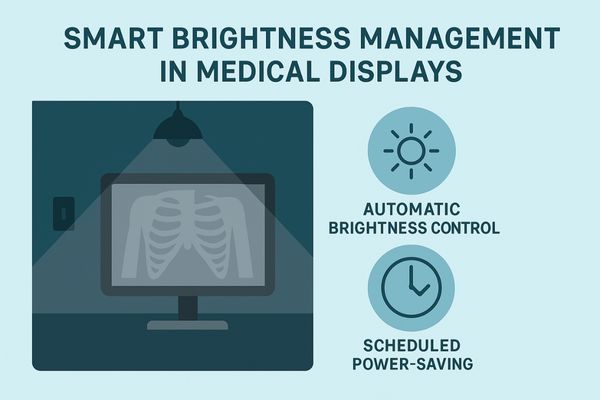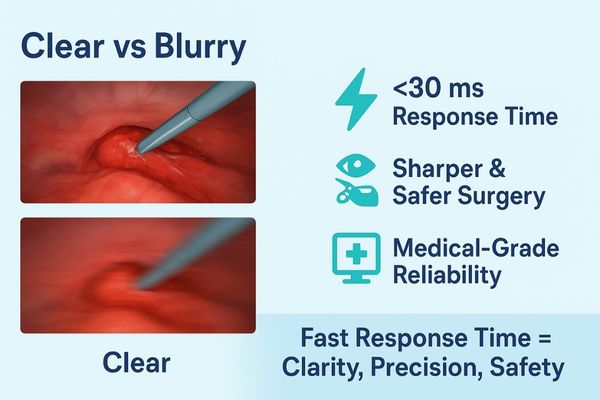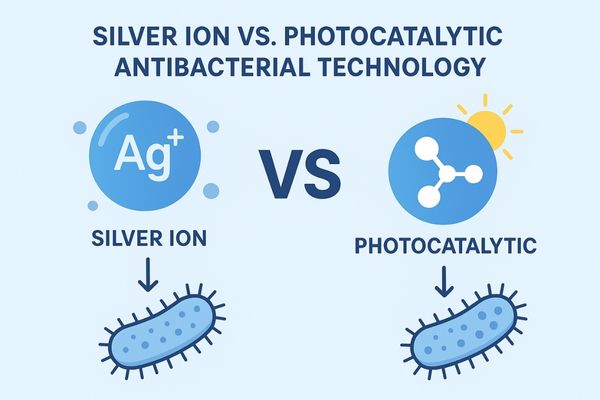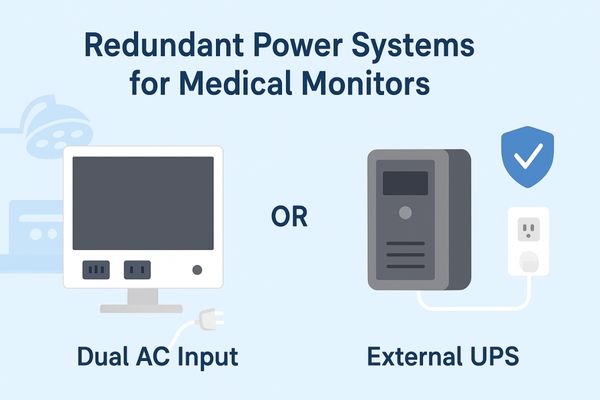
Medical-grade Displays in PACS Workstation Display Integration
Integrating medical-grade displays into PACS workstations is not only about enhancing image quality, but also about ensuring diagnostic accuracy, improving

Integrating medical-grade displays into PACS workstations is not only about enhancing image quality, but also about ensuring diagnostic accuracy, improving

Automatic brightness control (ABC) uses ambient light sensors for real-time adaptation, while scheduled power-saving uses timers for predictable energy reduction.

Response time defines how quickly a medical-grade display reacts to visual changes, and in endoscopic surgery it directly impacts image

Global demand for 4K medical-grade displays is surging, led by endoscopy and surgery. Versus 1080p, a 32″ surgical screen rises

Medical-grade displays form the backbone of telemedicine: DICOM-compliant grayscale, stabilized luminance/uniformity, and low latency keep images identical across sites for

In the field of medical-grade displays, antibacterial protection is increasingly achieved through two leading technologies: silver ion antibacterial coating and

Policy factors are profoundly shaping the global medical-grade display market. Stricter regulations raise safety and quality thresholds; health insurance and

Dual AC input and external UPS both ensure uninterrupted power for medical-grade monitors. Dual input offers simplicity and low maintenance,

In multidisciplinary consultations and remote collaboration, medical-grade displays deliver consistent and precise imaging through high resolution, DICOM calibration, and low
Choosing a medical monitor doesn’t have to be difficult. Tell us how and where you use it, and we’ll give you the most suitable options.

Chinese First Brand Medical Grade Monitors Manufacturer
ISO 13485,CE-MDR
martin@reshinmonitors.com
We will contact you within 1 working day, please pay attention to the email with the suffix “@reshinmonitors.com”.